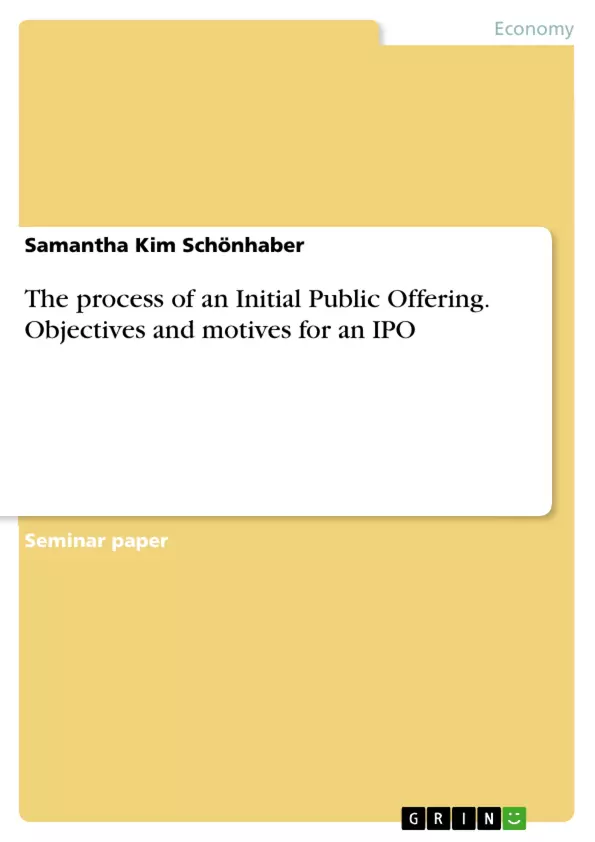This paper will give a general overview of the motives, the process and the risks of an Initial Public Offering. As part of this assignment, the Frankfurt Stock Exchange was chosen as an example. The requirements for a company and the admission by the BaFin should be exemplary for the different parts of the process of an IPO in general.
An IPO describes a company’s first-time placement of shares on a regulated market of a stock exchange. This can mean converting a company from private to public ownership. The transition from a private to a public company can be an important time for private investors to fully realize gains from their investment as it typically includes share premiums for current private investors. Meanwhile, it also allows public investors to participate in the offering.
The company will go through different phases during an IPO. During the process strengths, weaknesses, risks and opportunities will be assessed by the company and external parties. Once the decision is made for an IPO it can be a promising step towards a more independent future of a company.
Inhaltsverzeichnis (Table of Contents)
- Introduction
- Objectives and motives for an IPO
- Company-related motives
- Owner-related motives
- Overview of an IPO process
- Risks during and after an IPO
- Conclusion
Zielsetzung und Themenschwerpunkte (Objectives and Key Themes)
This study explores the process of an Initial Public Offering (IPO), a crucial step in the development of many companies. It examines the motivations behind IPOs, both from the perspective of the company and its owners, and outlines the stages involved in the IPO process.
- Motivations for IPOs
- Steps involved in the IPO process
- Potential risks associated with IPOs
- The impact of IPOs on company growth and development
- Considerations for companies considering an IPO
Zusammenfassung der Kapitel (Chapter Summaries)
- Introduction: This chapter provides an overview of the study's objectives and scope, introducing the concept of IPOs and their significance in the financial world.
- Objectives and motives for an IPO: This chapter delves into the motivations behind IPOs, exploring both company-related and owner-related factors that drive the decision to go public.
- Overview of an IPO process: This chapter presents a detailed overview of the various stages involved in an IPO, from initial planning and preparation to the final listing on a stock exchange.
- Risks during and after an IPO: This chapter examines the inherent risks associated with IPOs, both during the process itself and in the aftermath of going public.
Schlüsselwörter (Keywords)
The primary focus of this work is on the process of an Initial Public Offering (IPO), covering key aspects like company motivations, IPO stages, and associated risks. The study explores various factors influencing the decision to go public, such as company growth, owner incentives, and market conditions. It also examines the complexities and challenges involved in navigating the IPO process, highlighting potential risks that companies may face.
- Citar trabajo
- Samantha Kim Schönhaber (Autor), 2019, The process of an Initial Public Offering. Objectives and motives for an IPO, Múnich, GRIN Verlag, https://www.grin.com/document/919351



